- US President Donald Trump
- 2 April 2025
- American Industry
- broad new tariff policy
- duty
- imports
- India
- 26 percent
- ‘discounted' reciprocal tariffs
- China
- Countries
- auto industry
- ancillary
- ACMA
US President Donald Trump Announces Retaliatory Tariffs; Indian Government Carefully Examining The Implications
- By Bhushan Mhapralkar
- April 03, 2025
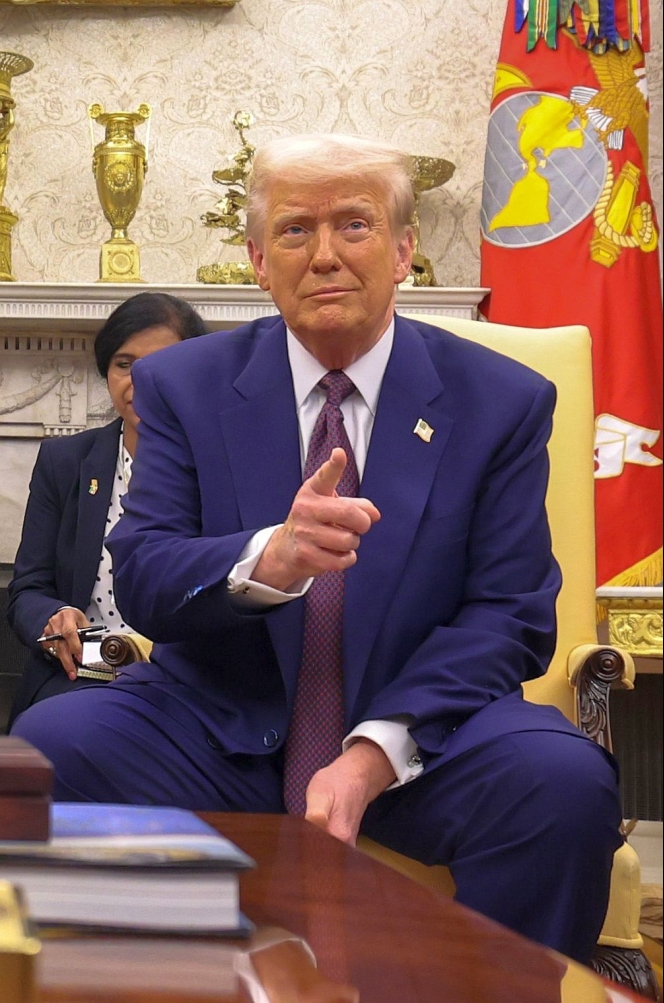
After terming India’s import duty barriers high for some time, US President Donald Trump has expressed that 2 April 2025 will be remembered as the day the American industry was reborn as his government announced a broad new tariff policy that imposes at least a 10 percent duty on nearly all imports from certain countries. In the case of India, the policy speaks of 26 percent ‘discounted' reciprocal tariffs. The tariff on China, on the other hand, is 34 percent.
Aimed at protecting American farmers and ranchers, according to Trump, the broad-based tariff policy is also being termed as ‘national emergency’ driven in view of the ongoing trade deficits, which hit a record USD 1.2 trillion in 2024.
The German auto industry has reacted to the US policy by stating that it 'will only create losers'. While the Asian stock markets have shrunk in response to the announcement, the Indian Ministry of Commerce is analysing the impact of the 26 percent ‘discounted’ tariff announcement.
Mentioning in its statement that it understands the intent of the US administration to boost domestic manufacturing and address trade imbalances, the Indian auto components apex body ACMA (Automotive Component Manufacturers Association of India) has said that autos and auto parts as well as steel and aluminium articles are already subject to Section 232 tariffs at 25 percent announced earlier by the US President’s order on 26 March 2025. A detailed list of auto components that will be subject to 25 percent import tariff is awaited, it mentioned.
Shraddha Suri Marwah, President, ACMA and CMD, Subros Ltd, averred, “ACMA remains hopeful that the ongoing bilateral negotiations between the Indian and U.S. governments will lead to a balanced resolution that benefits both economies. We believe that the strong trade relationship between India and the United States, especially in the auto components sector, will encourage continued dialogue to mitigate the impacts of these measures. ACMA is committed to engaging with all stakeholders to ensure the long-term interests of the Indian auto component industry.”
Saurabh Agarwal, Partner and Automotive Tax Leader, EY India, observed, "With US automotive tariffs rising, India's electric vehicle sector has a prime opportunity to capture a larger share of the US market, especially in the budget car segment.” He drew attention to the fact that China's 2023 auto and component exports to the US stood at US$17.99 billion whereas India's were only US$2.1 billion in 2024, highlighting the potential for growth. “To accelerate this, the government should enhance the PLI scheme by including more auto components, opening it to new players, and extending it by two years,” he added.
Mrunmayee Jogalekar, Auto and FMCG Research Analyst, Asit C Mehta Investment Interrmediates Ltd, expressed, “Certain sectors such as auto and auto ancillary, which are already subject to a separate 25 percent tariff announced in March are exempt to the levy of reciprocal tariffs. This means no additional tariffs will be imposed on this sector.”
Stating that other exempted segments include copper, pharmaceuticals, semiconductors, critical minerals and energy products, she informed,
“Since import duties apply to all trading partners, the extent of impact will vary across sectors and countries based on competitive advantages.” “For the Indian auto component industry, which derives around 30 percent of its revenue from exports, with 30 percent of that coming from the US, this could result in a potential hit on sales or profit margins,” she added.
In FY2024, ACMA reported that India exported USS$ 6.79 billion worth of auto components to the US. It imported only USS 1.4 billion, resulting in a substantial trade surplus in India's favour.
Against the backdrop of the broader tariff policy that speaks of a 26 percent duty of Indian exports to US, the discussion between Indian and the US regarding the bilateral trade agreement will assume importance as well as urgency. For US automotive companies to find their way to the Indian market despite their near cult status – the likes of Harley Davidson and Tesla – will only mean facing a competition that is stiffer than expected and a customer mindset that is far different from how it is in the US.
Srikumar Krishnamurthy, Senior Vice-President & Co-Group Head, Corporate Ratings, ICRA, said, "The US Government has imposed a 25 percent tariff on passenger vehicles (sedans, sport utility vehicles, crossover utility vehicles, minivans and cargo vans) and light trucks (collectively referred to as automobiles), which come into effect from 3 April 2025. As the PV exports from India to the USA represent less than 1 percent of the total PV exports, the tariff imposition of the tariff does not have any material impact on the Automotive OEMs. The scenario is however different for auto components. On 12 March 2025, a 25 percent tariff was imposed on all aluminium and steel components being imported into the US. Subsequent to this, on 26 March 2025, a 25 percent tariff was imposed on other key auto parts as well (including engines, transmissions, powertrain components and key electrical parts except those under USMCA), with processes to expand tariffs on additional parts, if necessary. The effective date is pending but is expected to be no later than 3 May 2025. Auto components have not featured in the latest set of additional tariff announcements that has been made on 2 April 2025. India’s auto components exports accounted for around 29 percent of industry revenues in FY2024. Of this, about 27 percent went to the US. While the situation is evolving, the recent tariff related development and the consequent inflationary pressures and slowdown in demand in the US could have a negative impact on revenue and earnings for component exporters (in the affected product categories) over the next few months. Nevertheless, with higher tariffs being levied on other competing nations, this could also create long-term opportunities for the exporters. Exporters dependent on the US are also trying to diversify their revenue base across other geographies (including Asia). Measures to improve value addition, diversification into non-auto segments and cost-optimisation strategies are also being worked upon to reduce the potential impact on margins.
Image for representative purpose only.
- SIAM
- Society of Indian Automobile Manufacturers
- Enhancing Efficiencies in Automotive Logistics
- Tapan Ghosh
SIAM Conclave Highlights Push for Sustainable Logistics in Indian Auto Sector
- By MT Bureau
- July 18, 2025

The Society of Indian Automobile Manufacturers (SIAM) convened its 11th Automotive Logistics Conclave today in New Delhi, spotlighting the shift toward more efficient and sustainable logistics in India’s fast-growing automotive sector.
Centred around the theme 'Enhancing Efficiencies in Automotive Logistics,' the event brought together key government officials, automotive leaders, and logistics service providers to deliberate strategies for building a resilient and eco-conscious logistics ecosystem.
Senior Railway Board official Hitendra Malhotra announced the introduction of specialised, higher-capacity railway wagons, including double-deck options tailored for SUVs, supporting increased vehicle transport needs.
Tapan Ghosh, Chairman of the SIAM Logistics Group and VP at Hyundai Motor India, noted that the sector has witnessed a 7.3% growth in FY 2024–25, attributing part of this expansion to enhanced logistics capabilities. Industry players highlighted a growing reliance on digital innovation, multimodal transport solutions, and rail-based logistics to increase efficiency and reduce carbon footprint.
S D Chhabra of Maruti Suzuki emphasised the integration of real-time tracking technologies and a broader push toward sustainability. Policy alignment and infrastructure development were also key focal points, with participation from leading firms including Mahindra & Mahindra, Ashok Leyland, Chetak Logistics, and APLL VASCOR.
The conclave reinforced SIAM’s commitment to green mobility, with discussions calling for industry-wide adoption of eco-friendly practices and regulatory coherence aligned with India's national sustainability goals.
Several logistics providers were recognised at the event for excellence in innovation and operations, underscoring the sector’s critical role in shaping the future of Indian mobility.
- Indian Racing League 2025
- IRL 2025
- Raoul Hyman
- Fabienne Wohlwend
- Laura Camps Torras
- Cailin Wood
- Ruhaan Alva
- Le Mans
- Neel Jani
- GP2
- Jon Lancaster
- Arjun Kapoor
- Naga Chaitanya
- John Abraham
- Sourav Ganguly
- Sudeep Kichcha
- Keerthivasan
- Akhilesh Reddy
Indian Racing League 2025 Kicks Off With First-Ever Driver Draft In Mumbai
- By MT Bureau
- July 15, 2025

The Indian Racing League (IRL) formally launched its 2025 season with a driver draft event held in Mumbai. This marked the first time a driver draft format was used in Indian motorsport, featuring the selection of 24 drivers across 6 city-based franchises, including international racers, Indian talent and women drivers.
Each team picked four drivers based on a fixed structure: one international driver, one emerging Indian or international talent, one Indian domestic racer and one female driver. Among the key names drafted were Le Mans winner Neel Jani, GP2 veteran Jon Lancaster, IRL champion Raoul Hyman and young Indian racers Ruhaan Alva, Sohil Shah and Akshay Bohra. Women racers such as Caitlin Wood, Fabienne Wohlwend and Laura Camps Torras also joined the grid, bringing diverse experience from series like the W Series, GT racing and F4.
The event also featured a joint press conference with all six team owners — including Arjun Kapoor, Naga Chaitanya, John Abraham, Sourav Ganguly, Sudeep Kichcha and Keerthivasan — who introduced their teams and outlined their plans for the season. Racing Promotions (RPPL) Chairman Akhilesh Reddy stated that the draft aimed to bring greater structure and inclusivity to Indian motorsport. The 2025 IRL season begins in August and will be held across city circuits and racetracks throughout India.
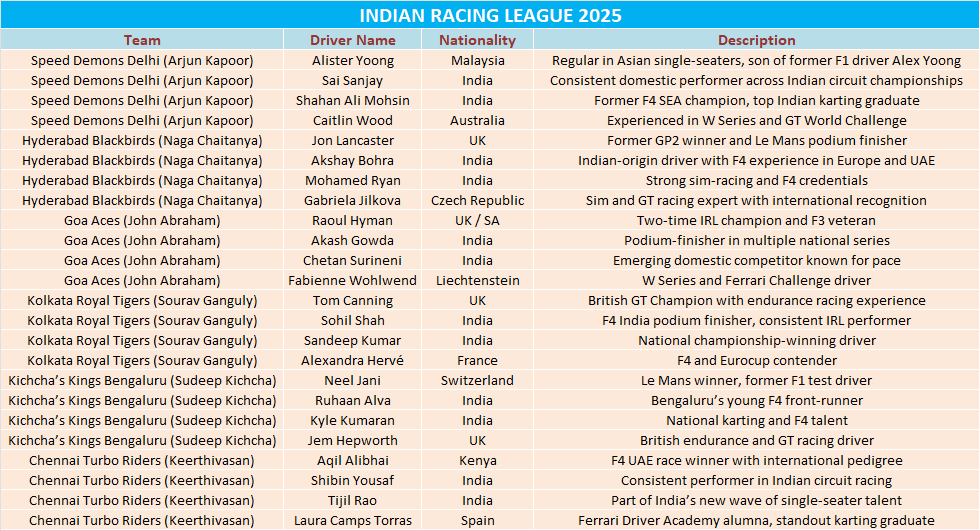
Auto Retail Grows 5% In June, FADA Maintains Cautious Optimism For Near-Term
- By MT Bureau
- July 07, 2025
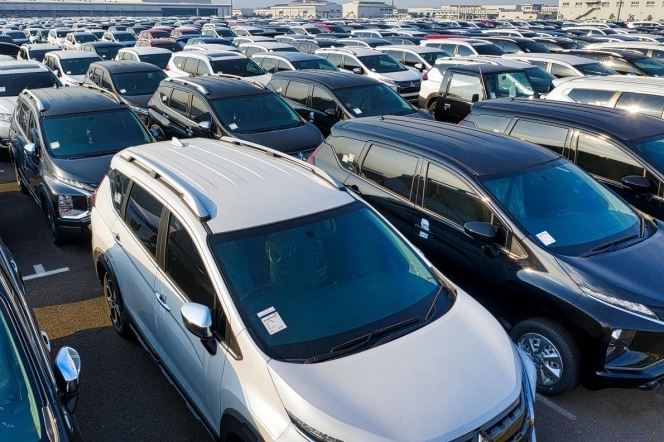
The Federation of Automobile Dealers Association (FADA), the apex body representing automotive dealerships in the country, has released the retail sales data for June 2025, which saw a total of 2 million vehicles sold in the country, which was 4.84 percent higher YoY, but 9.4 percent lower than the previous month.
Last month, two-wheeler sales continued to be in the green with 1.44 million units sold, as against 1.38 million units sold last year. Three-wheeler sales grew by 6.6 percent, while passenger vehicle sales at 297,722 units, saw a flattish growth of 2.45 percent YoY. Tractor sales at 8.6 percent, construction equipment at 54.95 percent and commercial vehicle with 6.6 percent showed signs of healthy growth.
C S Vigneshwar, President, FADA, said, “While two-wheelers showed some early-cycle softness, we remain confident of a robust ramp-up in the coming months as seasonal demand and targeted OEM initiatives take effect.”
He pointed out that while festival and marriage-season demand provided a boost, financing constraints and intermittent variant shortages moderated sales. Early monsoon rains and rising EV penetration also shaped buying patterns in the two-wheeler segment.
“Several dealers cited compulsory billing and forced stock lifts – often via auto-debit wholesales – leading to mandated high days of inventory aligned with festival-season targets. Overall, June demonstrated a resilient two-wheeler performance amid mixed market signals,” he noted.
In the passenger vehicle space despite elevated incentive schemes and fresh booking lent support, heavy rains and tight market liquidity impacted sales. “Some dealers indicated that certain PV OEMs have introduced compulsory billing procedures – such as automatic wholesale debits – to meet volume targets; inventory consequently stands at around 55 days. June thus painted a picture of modest but steadfast PV performance amid varied market cues,” Vigneshwar said.
The CV segment saw early-month deliveries buoy volumes before monsoon-induced slowdowns and constrained liquidity dampened inquiries and conversions. The impact of new CV taxation along with mandatory air-conditioned cabins has elevated ownership cost, alongside muted infrastructure demand.
Cautious optimism
Looking ahead, the retail body anticipates a period of mixed fortunes. Above-average monsoon rains in July, are expected to boost rural demand, particularly for two-wheelers, thanks to stronger farm incomes highlighted by an 11.3 percent YoY increase in Kharif sowing. However, intense rainfall in some regions could create logistical challenges.
Simultaneously, substantial government capital expenditure from June to August on infrastructure projects like roads, railways, metros and green energy initiatives will continue to support the CV and CE segments.
Despite these positive drivers, several headwinds remain. Evolving geopolitical tensions and potential repercussions from US tariff measures necessitate careful supplychain management and could dampen consumer confidence. Furthermore, scarcity of rare-earth materials is hindering component production, which in turn limits overall supply and retail volumes.
In the two-wheeler market, early monsoon showers and renewed rural activity have sparked interest, but heavy rainfall, component shortages and price hikes effective this month are impacting conversions. Passenger vehicles face challenges from high-base effects, a limited number of new model launches and tight financing, although festival planning and new incentive schemes offer some counterbalance. Commercial vehicles continue to contend with subdued infrastructure demand, increased ownership costs due to new taxes and mandatory air-conditioned cabin regulations, though extended order pipelines provide some relief.
Vigneshwar expects that July is likely to see a blend of agrarian tailwinds and the positive impact of school reopenings, tempered by seasonal difficulties, higher prices and liquidity constraints.
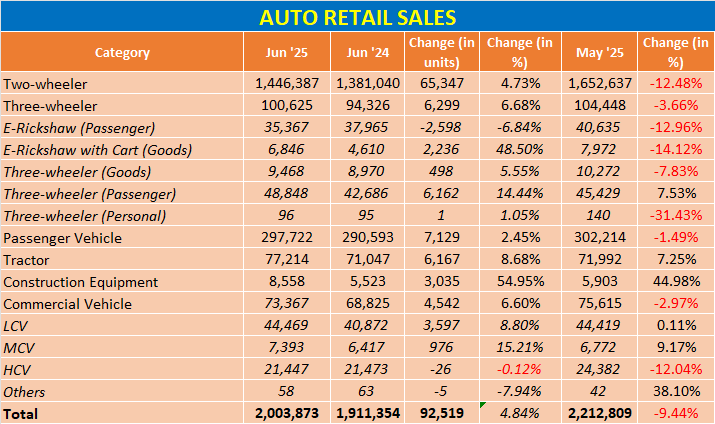
Tata Motors’ PV And CV Sales In The Negative, Outlook Remains Positive
- By MT Bureau
- July 01, 2025
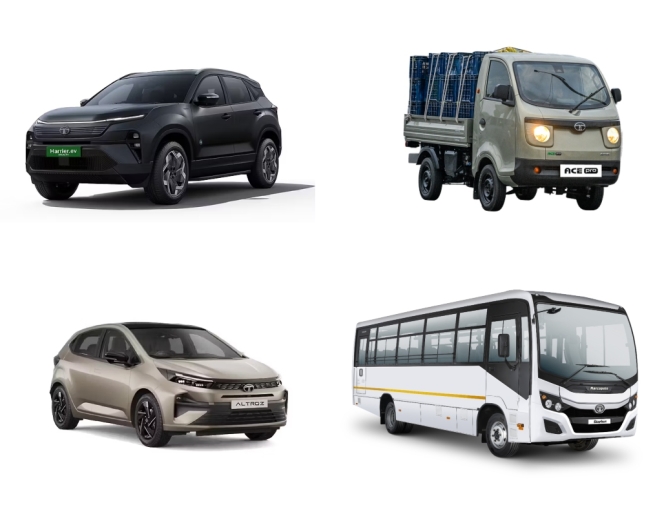
Tata Motors, one of the leading passenger vehicle and commercial vehicle manufacturers in the country, has announced its wholesales for June 2025 and Q1 FY2026.
The company reported that its total PV sales came at 124,809 units in Q1 FY2026, down 10 percent from Q1 FY2025 on a YoY basis. Domestic PV sales, including EVs, came at 123,839 units, down 10 percent YoY. For June, PV sales came at 37,083 units, down 15 percent compared to the same period last year.
| TATA MOTORS PASSENGER VEHICLES | ||||||
| June '25 | June '24 | Change (in %) | Q1 '26 | Q1 '25 | Change (in %) | |
| PV Domestic (includes EV) | 37,083 | 43,524 | -15% | 123,839 | 138,104 | -10% |
| PV IB | 154 | 100 | 54% | 970 | 578 | 68% |
| Total PV (includes EV) | 37,237 | 43,624 | -15% | 124,809 | 138,682 | -10% |
| EV (IB + Domestic) | 5,228 | 4,657 | 12% | 16,231 | 16,579 | -2% |
Shailesh Chandra, Managing Director, Tata Motors Passenger Vehicles and Tata Passenger Electric Mobility, said, “In Q1 FY2026, the passenger vehicle industry experienced volume pressures, particularly in May and June, with flat growth reflecting continued softness in demand."
"The electric vehicle segment emerged a bright spot, driven by robust growth and the launch of new EV models across OEMs, enhancing customer interest and consideration. Tata Motors reported wholesales of 124,809 units in Q1 FY2026, including 16,231 EV units, underscoring our commitment to aligning wholesale and registration volumes. EV sales gained strong momentum towards the end of the quarter with a healthy growth trajectory. The refreshed Tiago posted 16 percent YoY volume growth in Q1 FY2026 and new launches – Altroz and Harrier.ev – saw a positive market response, with their full impact expected in the coming months,” he said.
On the other hand, Tata Motors’ commercial vehicle (CV) business reported sales of 85,606 units, down 6 percent YoY for Q1 FY2026. Domestic CV sales at 79,572 units, were down 9 percent as compared to Q1 FY2025.
In June 2025 alone, total CV sales came at 30,238 units, which is 5 percent lower than June 2024. In the domestic market, the demand for Medium and Heavy Commercial Vehicles (MH&ICV) came at 12,871 units, as against 4,640 units for the same period last year. During Q1 FY26, MH&ICV domestic sales were 37,370 units as against 40,349 units in Q1 FY25.
| TATA MOTORS COMMERCIAL VEHICLES | ||||||
| June '25 | June '24 | Change (in %) | Q1 '26 | Q1 '25 | Change (in %) | |
| HCV Trucks | 7,359 | 8,891 | -17% | 21,735 | 24,690 | -12% |
| ILMCV Trucks | 4,863 | 4,997 | -20% | 14,497 | 13,791 | -20% |
| Passenger Carriers | 5,658 | 5,654 | 4% | 15,089 | 14,893 | 9% |
| SCV Cargo & Pickup | 10,056 | 11,081 | 1% | 28,251 | 34,241 | 4% |
| Total CV Domestic | 27,936 | 30,623 | -9% | 79,572 | 87,615 | -9% |
Girish Wagh, Executive Director, Tata Motors, said, “Q1 FY26 began on a subdued note for the commercial vehicle industry with muted performance in the HCV and SCVPU segments while buses, vans and ILMCVs registered modest year-on-year growth. Tata Motors Commercial Vehicles recorded domestic sales of 79,572 units, 9.2 percent decline compared to Q1 FY25."
"However, June 2025 witnessed a sequential growth of 8 percent over May 2025. Additionally, our International Business delivered a robust 67.9 percent growth in volumes over Q1 FY25. During the quarter, we launched India’s most affordable mini-truck, the Ace Pro, offered in petrol, bi-fuel and electric powertrains, which received an encouraging market response. We enhanced driver comfort by introducing air-conditioned cabins across our entire range of light to heavy trucks. We also expanded our international footprint by entering Egypt and expanded our offerings for the Middle East North African region,” Wagh added.
Going forward, Wagh stated that with forecasts for a healthy monsoon across the country, a reduction in repo rate and renewed thrust on infrastructure development, will bring back sales momentum for the commercial vehicles segment.
Chandra too shared his optimism for the PV market and stated, “Looking ahead, while overall industry growth is expected to remain subdued, Tata Motors is well positioned to leverage its new launches to outperform across segments—including hatchbacks and SUVs, while continuing to build on the EV momentum.”




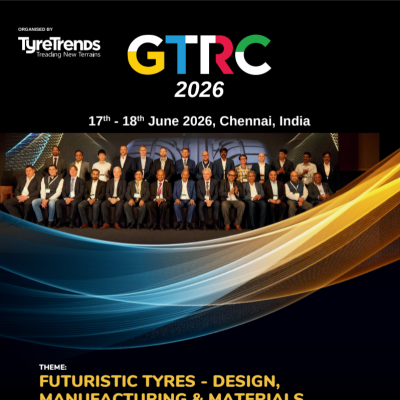
Comments (0)
ADD COMMENT